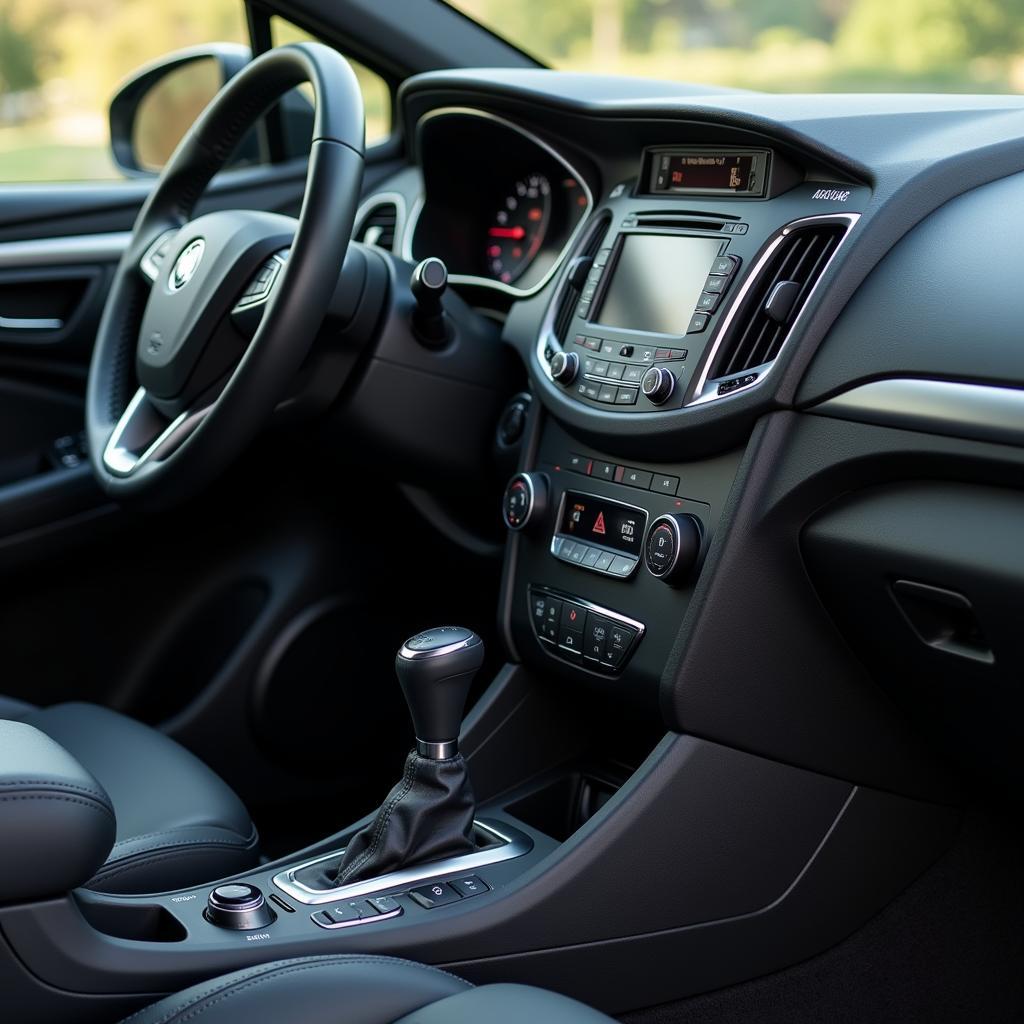Jammed car buttons can be a real nuisance, interrupting your flow and sometimes even posing safety concerns. Whether it’s your power window switch, radio control, or climate control, a sticky or unresponsive button can be frustrating. This guide will walk you through the common causes of jammed car buttons and provide practical solutions for How To Fix Jammed Car Buttons yourself, saving you a trip to the mechanic.
If your car’s buttons are acting up, the problem could range from something as simple as dirt and grime to a more complex electrical issue. Don’t worry; we’ll cover all the bases. From simple DIY fixes to more involved repairs, you’ll be back in control of your car’s functions in no time. For instance, a quick fix you can try is using compressed air to dislodge debris. This often solves the problem without any further intervention. Sometimes, a more thorough cleaning with isopropyl alcohol is needed.
 Cleaning Car Buttons with Isopropyl Alcohol
Cleaning Car Buttons with Isopropyl Alcohol
Common Causes of Jammed Car Buttons
Several factors can contribute to sticky or unresponsive buttons. Understanding these causes can help you choose the most effective solution. Here are some of the most common culprits:
- Dirt and Grime: Dust, crumbs, and spilled drinks can accumulate around and under the buttons, making them difficult to press.
- Spilled Liquids: Sticky substances like soda or coffee can dry and create a residue that interferes with the button’s movement.
- Wear and Tear: Over time, the button mechanisms can wear down, leading to stiffness or sticking.
- Electrical Issues: A malfunctioning switch or wiring problem can cause the buttons to become unresponsive.
- Temperature Extremes: Extreme heat or cold can sometimes affect the button’s materials and cause them to become stuck.
How to Troubleshoot and Fix Jammed Car Buttons
Now that you know the potential causes, let’s dive into the solutions. Remember to always disconnect the car battery’s negative terminal before working on any electrical components.
Cleaning Your Car Buttons
- Compressed Air: Use a can of compressed air to blow away loose dust and debris from around the buttons.
- Isopropyl Alcohol: Dampen a cotton swab with isopropyl alcohol (90% or higher) and gently clean around and under the buttons. Avoid using excessive alcohol, as it could damage the electronics.
- Soft-Bristled Brush: For stubborn grime, use a soft-bristled brush (like a toothbrush) dipped in isopropyl alcohol to scrub the affected area.
- Contact Cleaner: For electrical contact issues, use a specialized contact cleaner spray. Follow the instructions on the product label.
Addressing Mechanical Issues
Sometimes, cleaning alone won’t suffice, and you might need to disassemble the button panel for a deeper fix. This might involve removing screws or clips. Refer to your car’s owner’s manual or look up online tutorials for specific instructions.
- Inspecting the Mechanism: Once the panel is removed, carefully examine the button mechanisms for any signs of damage or wear.
- Lubrication: If the buttons are stiff, apply a small amount of silicone-based lubricant to the moving parts. Avoid using oil-based lubricants, as they can attract dust and grime.
- Replacing Damaged Parts: If any parts are broken or severely worn, they may need to be replaced. You can usually purchase replacement buttons or switches online or from an auto parts store.
Remember, if you’re not comfortable working with electrical components or disassembling parts of your car, it’s always best to consult a qualified mechanic. Trying the fixer upper car fix sims 3 might be fun virtually, but real cars require careful attention.
![]() Applying Silicone Lubricant to Car Buttons
Applying Silicone Lubricant to Car Buttons
Preventing Jammed Car Buttons
A little preventative maintenance can go a long way in keeping your car’s buttons functioning smoothly.
- Regular Cleaning: Wipe down your dashboard and buttons regularly with a damp microfiber cloth.
- Careful Eating and Drinking: Avoid eating and drinking in your car, especially sticky or sugary substances.
- Protective Covers: Consider using silicone covers for frequently used buttons to protect them from spills and wear.
“Regular maintenance can prevent many common car problems, including jammed buttons,” says John Davis, a senior automotive technician at Auto Experts Inc. “A simple cleaning routine can save you time and money in the long run.”
Conclusion
Jammed car buttons are a common annoyance, but they’re usually easy to fix. By following these steps and taking preventative measures, you can keep your car’s controls working smoothly. If you are considering a fixer upper car drove into house, ensure the buttons are functioning correctly before purchasing. Don’t let stuck buttons disrupt your drive. Remember to reach out for help if needed. Contact AutoTipPro at +1 (641) 206-8880 or visit our office at 500 N St Mary’s St, San Antonio, TX 78205, United States.
 Car Dashboard with Clean Buttons
Car Dashboard with Clean Buttons
FAQ
- What is the best way to clean car buttons? A combination of compressed air and isopropyl alcohol is usually effective.
- Can I use WD-40 on jammed car buttons? WD-40 is not recommended as it can leave a residue that attracts dust and grime.
- How do I remove the button panel in my car? Refer to your car’s owner’s manual or search online for specific instructions.
- What type of lubricant should I use for car buttons? Use a silicone-based lubricant, not an oil-based one.
- When should I take my car to a mechanic for jammed buttons? If the problem persists after cleaning and lubrication, or if there’s an electrical issue, consult a mechanic.
- How can I prevent my car buttons from getting jammed? Regular cleaning, careful eating and drinking habits, and protective covers can help prevent jammed buttons.
- Are jammed car buttons a safety concern? In some cases, yes. Jammed buttons for essential functions like hazard lights or power windows can be a safety hazard.






Leave a Reply